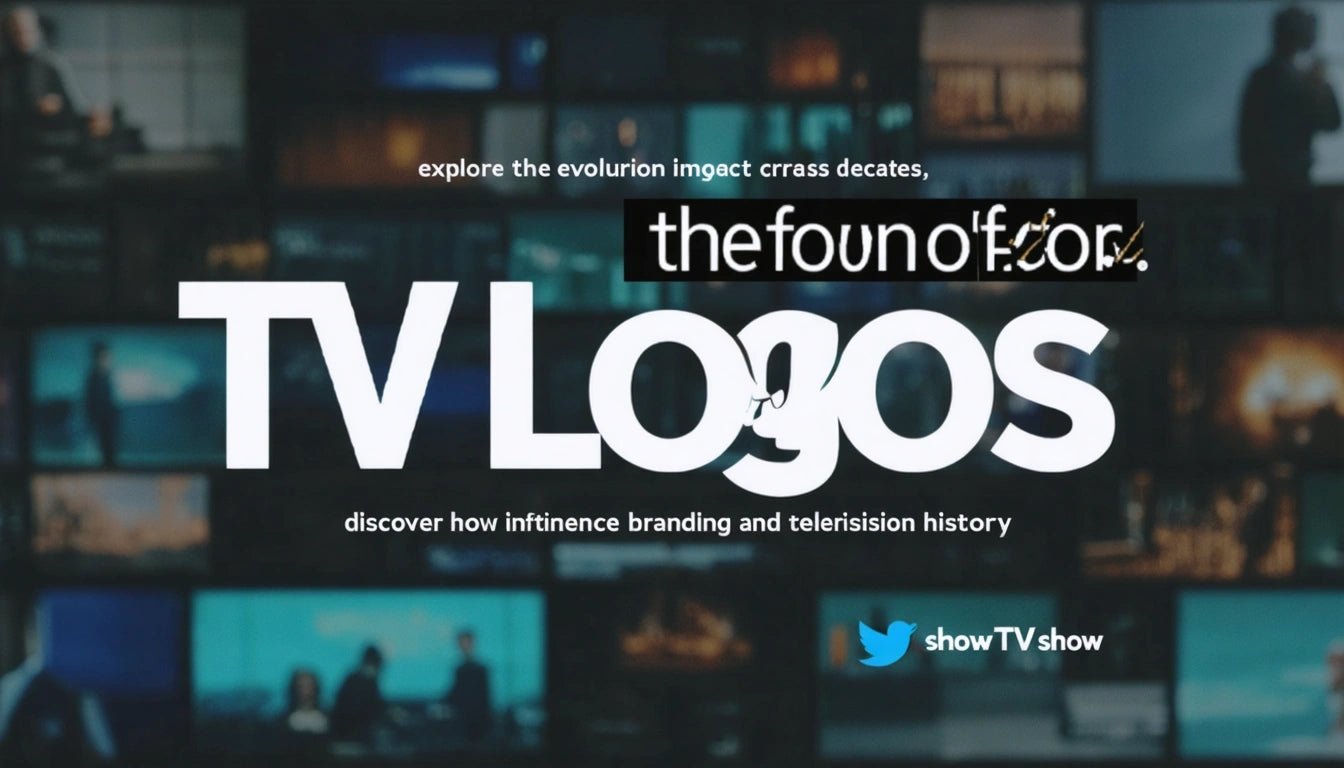Table of Contents
Iconic TV Show Logos: A Visual Journey
Television shows have long used distinctive logos to create instant recognition and brand identity. These visual symbols serve as the first point of connection between viewers and content, often becoming cultural touchstones that transcend the shows themselves. The evolution of logos for tv shows reflects broader design trends while maintaining the unique personality of each program.
Evolution of TV Show Logos Through the Decades
TV show logos have undergone remarkable transformations since the early days of television. In the 1950s and 60s, logos tended toward simplicity with bold typography, limited color palettes, and straightforward design elements. Shows like "I Love Lucy" and "The Twilight Zone" featured logos that prioritized legibility and recognition on black-and-white screens.
The 1970s and 80s brought more elaborate designs with dimensional effects, custom typography, and distinctive color schemes. Shows like "Happy Days" and "Miami Vice" utilized logos that captured the aesthetic of their respective eras, with the latter embracing neon colors and sleek typography that embodied the show's stylish approach.
By the 1990s, computer-generated imagery allowed for more complex tv show logos with animation and special effects. The iconic "Friends" logo with its colorful dots and distinctive font became instantly recognizable, while "The X-Files" employed a minimalist approach with its glowing letter X that perfectly captured the show's mysterious tone.
Today's logos of tv shows often incorporate motion design principles, with many featuring kinetic typography and elaborate animations for opening sequences. As noted in this exploration of logo design principles, modern logos must function across multiple platforms while maintaining their core identity.
Elements That Make TV Show Logos Memorable
The most enduring tv show logos share several key characteristics:
Typography and Font Selection
The typeface chosen for a show's logo often communicates its genre and tone. Serif fonts might suggest drama or period pieces, while sans-serif designs often indicate modernity or comedy. Custom letterforms can become synonymous with the show itself, as with the distinctive typography of "Game of Thrones" or "Breaking Bad."
Color Psychology
Color choices in tv shows logo design are never accidental. The vibrant yellow of "The Simpsons" logo conveys the show's animated humor, while the red of "Stranger Things" evokes both nostalgia and danger. According to this analysis of logo meanings, color can trigger specific emotional responses in viewers.
Symbolism and Iconography
Many successful logos incorporate visual elements that represent key themes from the show. The throne in the "Game of Thrones" logo or the yellow umbrella in "How I Met Your Mother" serve as visual shorthand for central concepts. These symbols often become cultural reference points, similar to how certain iconic shapes and designs can become instantly recognizable across different contexts and settings.
Successful TV show logos balance brand recognition with thematic representation, creating visual signatures that viewers instantly associate with their favorite programs.
Iconic Examples of TV Show Logos That Defined Genres
Certain tv show logos have transcended their programs to influence entire genres:
- Friends (1994-2004): The playful, colorful logo with its distinctive font and dots between letters created a template for sitcom branding that many shows still reference.
- The Sopranos (1999-2007): The imposing, serif-heavy logo with its distinctive "R" established a visual language for prestige television.
- Lost (2004-2010): The simple yet ominous floating logo captured the show's mysterious nature and has been widely imitated.
- Breaking Bad (2008-2013): The periodic table-inspired logo cleverly incorporated the show's chemistry theme into its visual identity.
As explored in this collection of recognizable symbols, these logos achieved iconic status through their perfect alignment with show content and consistent application across marketing materials.
When TV Shows Redesign Their Logos: Hits and Misses
Logo redesigns for long-running shows can either refresh the brand or alienate loyal viewers. Successful redesigns maintain core elements while updating dated aspects. "Doctor Who" has effectively evolved its logo multiple times over decades while preserving recognizable elements.
Conversely, some redesigns fail to capture the essence of the original. When "American Idol" refreshed its logo in later seasons, many fans felt it lost the distinctive character that had made the original so recognizable. According to this examination of logo evolution, the most successful redesigns honor heritage while embracing contemporary design principles.
Cultural Impact and Recognition of TV Show Logos
The most successful tv show logos transcend their original context to become cultural artifacts. The "Cheers" logo still evokes nostalgia decades after the show ended, while the "Breaking Bad" logo remains instantly recognizable to fans worldwide.
These logos often find new life through merchandise, parodies, and homages. The distinctive yellow of "The Simpsons" logo or the friends of "Friends" appear on everything from t-shirts to coffee mugs, demonstrating how tv show logos function as powerful brand assets.
In the streaming era, logos must work harder than ever to stand out in crowded content libraries. Netflix originals like "Stranger Things" have developed distinctive visual identities that function effectively as thumbnails and across marketing materials.
As television continues to evolve across platforms and viewing habits change, logos remain crucial touchpoints between shows and their audiences. The most successful designs balance timeless appeal with contemporary relevance, creating visual signatures that endure long after the final episode airs.



















